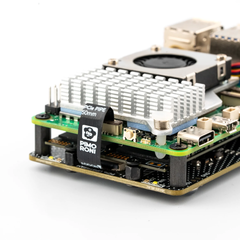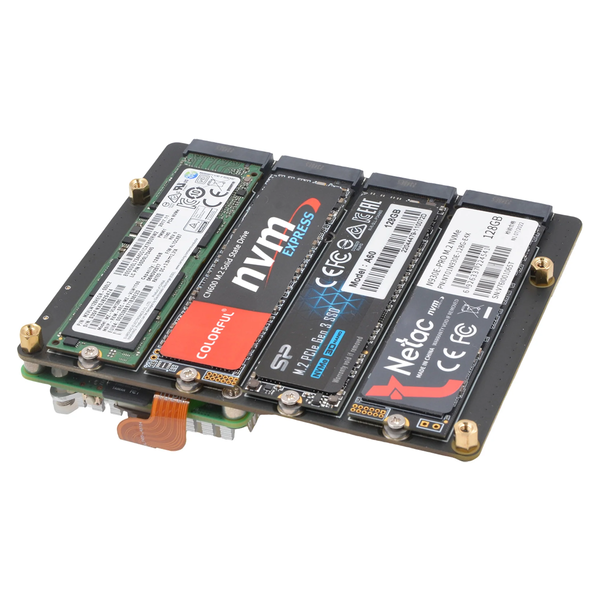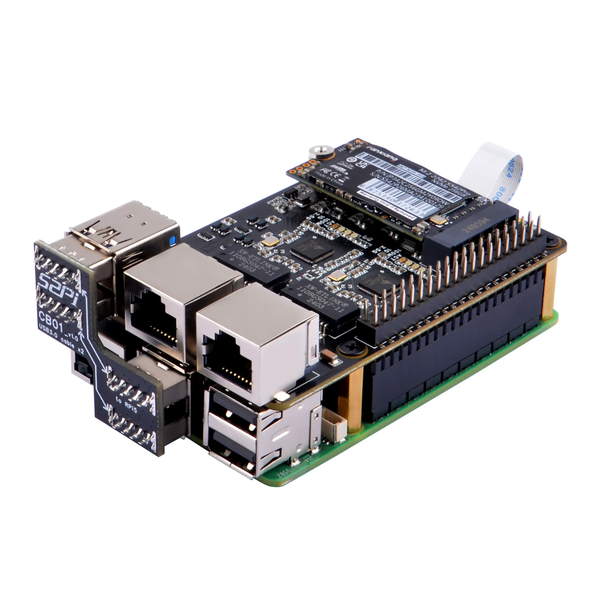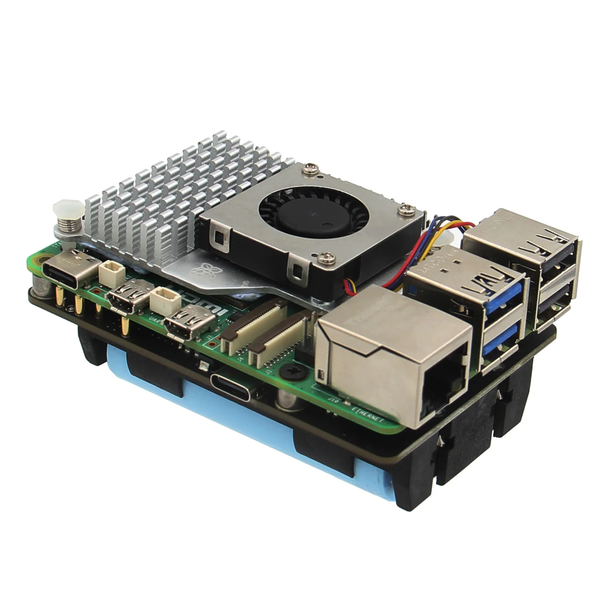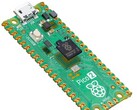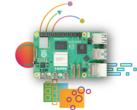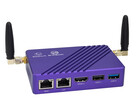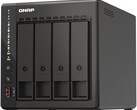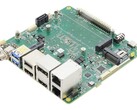Pimoroni NVMe Base Duo
This adapter board will allow you to add 2 NVMe drives to your Raspberry Pi 5. Unlike the M.2 Hat+ from Raspberry Pi itself, the NVMe Base Duo allows you to add two 2242 or smaller NVMe drives without obscuring the airflow to the fan. The board still lets you use the 27 watt power supply to power both the drives and the Pi.
Pimoroni recommends running the board at PCIe 2.0 speeds which will reduce the throughput of the drives to only 250 MB/s when using 2 drives (500 MB/s if using only one), nowhere near the maximum speed of the drives themselves, but this could still be a cheap point of entry into a homebrew NAS.
Geekworm X1011
If two NVMe drives for your Raspberry Pi 5 aren’t enough, Geekworm has got you covered with this 4 bay NVMe board. This can be powered either by the GPIO pins or a barrel jack and will give your Raspberry Pi 5 access to four M.2 2242 and smaller NVMe SSDs. Like the Pimoroni NVMe Base Duo you are still limited to PCIe Gen 2.0 speeds, so the throughput of each drive will be severely limited when utilising all four, but the product will give your Raspberry Pi 5 unprecedented access to storage. At approximately twice the price of the Pimoroni Base Duo it isn’t cheap, but would be a pretty easy way to build a high capacity NAS.
U2500 Dual M.2 NVMe
The Dual M.2 NVMe in the title is a bit misleading as this add-on board only comes with one NVMe slot. However, what it does do is give you two 2.5 Gbps ethernet ports. This board utilises the two USB 3.0 ports on the Pi converting them to 2.5G ethernet, leaving the PCIe socket free for the NVMe drive. Obviously you lose those USB ports leaving your two USB 2.0 ports free for other purposes.
This add-on board would make the Raspberry Pi an excellent network appliance such as a homebrew router, or let you turn your Raspberry Pi into a Docker solution where you can assign network ports to individual Docker containers. As this board mounts over the CPU it will restrict airflow, but it does have the advantage of being combined with other rear mounted boards such as a UPS.
Geekworm X1200 UPS
The Geekworm X1200 UPS will allow you to run your Raspberry Pi 5 from two 18650 batteries. With seamless power switching it enables your Pi to continue operating if your main source of power fails. Equally it could be used to make your solution mobile or install it in a vehicle. Geekworm also offers a unit with four 18650 cells for those looking for extended runtime away from the wall.
Pineboard Hat AI
Probably not something the average Raspberry Pi user would need, but the Pineboard Hat AI will let you add a Coral M.2 Dual Edge TPU accelerator board to your Raspberry Pi. This enables you to run your own Large Language Model or detect objects on CCTV. The Coral M.2 board can’t be used to train models, this would be better left to a discrete GPU, but once the model is trained it can be run at near real time on the Coral TPU. With a Tera Operations Per Second (TOPS) of 8, this isn’t going to come close to the requirement of 40 TOPS for a Co-Pilot PC, but rather is a low cost solution for those looking to experiment in running AI models on a low power PC.
The Raspberry Pi 5 is available on Amazon for $89.58.




